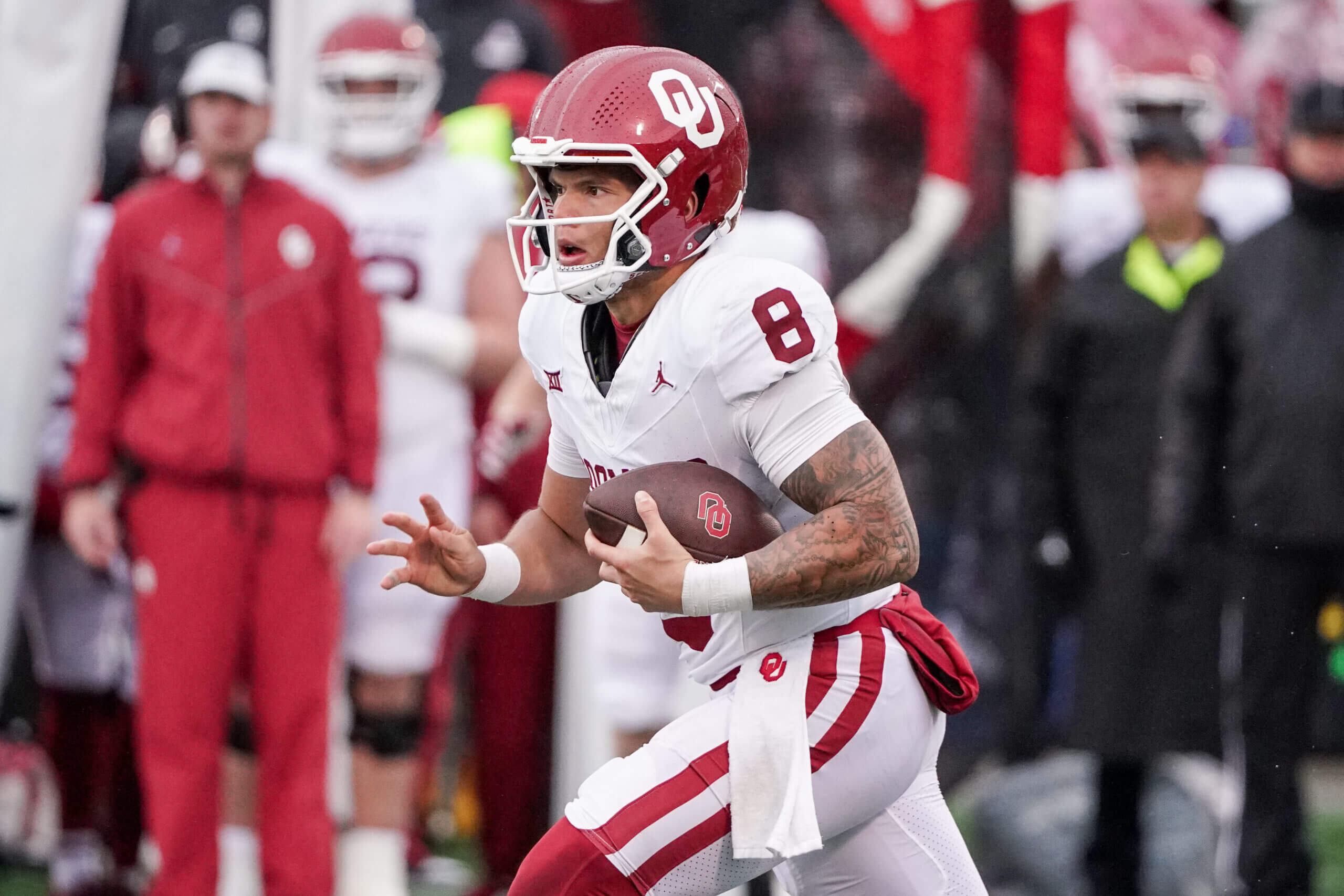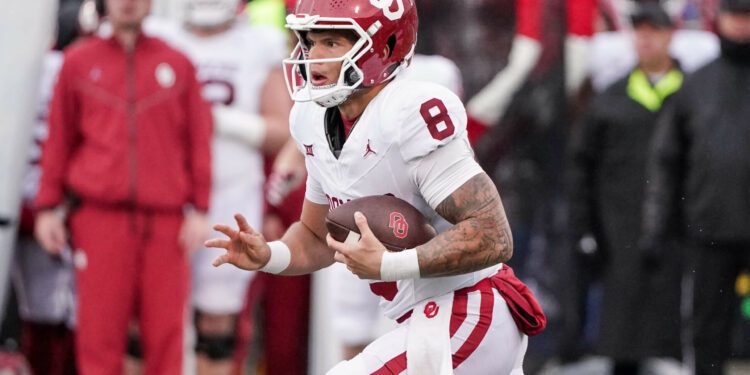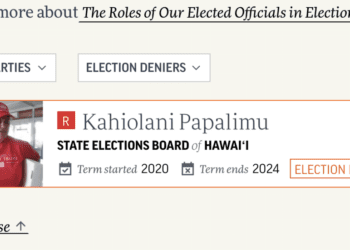The flight from Chicago to Honolulu is roughly 10 hours and covers more than 4,000 miles.
Brian Polian, the former special teams coordinator at Notre Dame, estimates he took that trip as many as 18 times from 2007 to early 2009.
“I was on the same flight most weeks and would see the (same) crew over and over again,” said Polian, now the athletic director at John Carroll University in Ohio. “They were a Hawaii-based crew, so they knew exactly who I was going to see, and it was almost funny in the sense that they were invested in the recruitment of the young man.”
Notre Dame did not typically recruit the state of Hawaii at that time. But Polian, whose territory included the West Coast, had zeroed in on five-star prospect Manti Te’o — the top defensive recruit in the Class of 2009 — and was determined to lure the linebacker from Honolulu to South Bend.
The persistence paid off.
Notre Dame eventually signed Te’o, a recruiting triumph that changed both the trajectory of the Fighting Irish’s program and shined a national spotlight on football in Hawaii. (Oh, it also paid off for Polian, who was upgraded to first class for all future recruiting trips to the islands.)
Recruiting the state isn’t easy given the logistics and finances involved with making such a long trip. But as Polian proved, schools that make an effort in Hawaii can reap the benefits later. And since Te’o’s time at Punahou School, the talent in Hawaii has only grown.
Oregon signed eventual Heisman Trophy winner Marcus Mariota in the Class of 2011. Alabama signed five-star prospect Tua Tagovailoa in the Class of 2017. Jaron Keawe Sagapolutele was the surprise star of the Elite 11 Finals in June. And when the Ducks open their season next month, they’ll be led by another quarterback from Hawaii in Oklahoma and UCF transfer Dillon Gabriel.
Most P5 signees from Hawaii, Classes of 2015-24
“There’s prospects in Hawaii every year,” said Utah coach Kyle Whittingham, who has recruited the state for the Utes since 1994 and has five players on his current roster from the islands. “It’s just been too good to us. It’s been too productive. And we’d be foolish to not continue to do it.”
There is, of course, an added benefit.
“Oh, it’s nice,” Whittingham said, laughing. “Because what better place to visit than Hawaii?”
Whittingham credits former Utes coach Ron McBride for Utah’s success in Hawaii, as well as in Samoa, Tonga and New Zealand. Whittingham joined McBride’s staff as the defensive line coach in 1994 and jumped straight in when McBride informed him that Hawaii would be one of his territories.
Utah signed five players from Hawaii during that recruiting cycle. He’s been making the trip ever since.
“In my life, football-wise and as well as just vacation-wise, I’ve probably been over to the islands 200-plus times, and I love it over there,” Whittingham said. “There’s never been a year when there hasn’t been several really good players coming from the islands.”
Still, Hawaii isn’t booming with five-star talent or blue-chip prospects with dozens of offers every year. Sagapolutele, who committed to Cal in early July, is Hawaii’s highest-rated prospect in the 2025 cycle yet is ranked outside the top 500 in the 247Sports Composite.
“They’re loaded with talent in Florida and Texas,” said Mililani High coach Rod York, who coached Gabriel and former UCF and Florida State quarterback McKenzie Milton. “There’s plenty to go around in the South, so they don’t need to come out here.”

Dillon Gabriel, now at Oregon, starred at Mililani High before signing with UCF in the Class of 2019. (Denny Medley / USA Today)
But high school football in Hawaii is competitive. Two schools on Oahu finished the 2023 season ranked in MaxPreps’ final top 100 — Kahuku at No. 46 and Mililani at No. 51. And Kahuku beat Southern California power St. John Bosco, which ranked No. 6 in the final poll.
And for every Te’o, there’s a Max Unger, a three-star offensive line prospect in the Class of 2004 who signed with Oregon and went on to start 130 games in a 10-year NFL career. For every Tagovailoa, there’s a Gabriel, the 27th-ranked quarterback in the Class of 2019 who enters the 2024 season as a co-favorite to win the Heisman Trophy.
Whittingham, known as a strong developer of talent, sees that potential firsthand.
“It is definitely one of the more primary places in our recruiting footprint,” he said. “Moving to the Big 12, we don’t expect that to change at all, even though our schedule has changed quite dramatically and we won’t be playing in California very often.”
Given Utah’s proximity to the West Coast, the Utes have a three-tiered approach when it comes to recruiting Hawaii. It starts with an area recruiter. From there, a prospect’s position coach and coordinator get involved. Whittingham then comes in as the closer.
Salt Lake City to Honolulu is about a 6 1/2-hour direct flight. Typically, Whittingham will stay for two to four days — making his rounds among schools to ensure that he visits with every target on Utah’s board. Sometimes, his travel buddy tags along.
“My wife, you bet. Anytime she can wiggle her way into a Hawaii trip when I have to go over there recruiting, she comes oftentimes,” he said. “She loves it, as well.”
Whittingham believes his program features the most diverse roster in college football.
“We’re almost exactly one-third African American, one-third Polynesian and one-third Caucasian,” he said. “To our knowledge, nobody has that equal blend of backgrounds and players, and we think that’s a strength of ours. It adds to our culture.”
It also helps Utah recruit in Hawaii, home to one of the largest Polynesian populations in the world.
“And not only have we recruited them,” he said, “but they’ve had a great deal of success while they were in the program. It’s one thing to recruit an area, but when the players from that area that come to your school end up being very successful and productive, that’s a selling point.”
Signing Te’o paid dividends in the short term for Notre Dame — he was a two-time All-American — but also opened a new pipeline for the program and the coach who recruited him.
“Not only did it allow us to recruit Hawaii at a really high level,” Polian said, “it also allowed us to recruit Polynesian players from different parts of the country because Manti would get on the phone with any family and say, ‘I trust these folks, it’s a great place.’
“It changed everything and even to the point where when I was the head coach at Nevada and we recruited Hawaiian players, I knew that (if) we ever needed (Manti) to get on the phone with a family and say, ‘Hey listen, I’ve known Coach forever, you can trust him,’ that went so far.”
Current Notre Dame special teams coach Marty Biagi, who is relatively new to recruiting in Hawaii, said you have to earn the trust of coaches and families if you want to be successful in the state.
“It’s very similar to recruiting in different parts of the country where culture and relationships are really important,” he said. “And you kind of see that the first time there, they kind of are, not skeptical, but, ‘Hey, have you recruited the islands? Do you really know what you’re doing?’ That kind of thing.
“I think once they see that you’re gonna continuously come back and build those relationships, that’s when those coaches and those families really start to trust.”
Ken Niumatalolo is a native of La’ie, Hawaii, and can remember what the recruiting landscape looked like back in the late 1980s when he signed as a quarterback to play for Dick Tomey and the home-state Rainbow Warriors.
“Back then, it was the Pac-8 or the WAC (coming in to recruit),” he said. “Logistically, it’s tough going there.”
Niumatalolo is now the head coach at San Jose State but is well aware of the challenges of traveling to Hawaii from the East Coast after spending 25 years at Navy — 10 as an assistant and 15 as the head coach.
Hawaii prospects, Classes of 2015-24
Ranked recruits
261
5-stars
2
4-stars
22
Power 5 signees
100
The unique nature of recruiting to a service academy, combined with his ties to his home state, made him a frequent visitor to the islands as a young assistant.
“You’ve got to get used to red-eyes,” he said. “If you can’t sleep on the plane, it’s probably not gonna bode well for you as a recruiter.”
The long flights never bothered Niumatalolo, but he never could get used to the six-hour time difference.
“When you get there, it’s not like, ‘OK, let me recalibrate, let me take a day to kind of get on that time schedule.’ You’re normally hitting the ground running,” he said. “You have visits with parents or at schools or whatever the case may be — seeing coaches. Then you’re right back on the plane coming back.”
Spring recruiting was particularly challenging.
Niumatalolo can remember multiple occasions when he would fly from Annapolis, Md., to California during the week. He’d then make his way out to Hawaii, make the rounds at the local schools and fly home on a Friday night only to go straight to the office at the Naval Academy on a Saturday morning for visits with recruits and their families. Those visits would typically wrap up on Sunday afternoons. Then he’d fly back out to recruit again — after saying hello to his wife, Barbara, and their three young children during the one day he was at home.
“We chose this path so you really didn’t complain,” he said. “It was hard, but there’s a lot of hard things in coaching. That was just part of the deal. … (But) I always used to chuckle when guys would talk about, ‘Man, I have to go here and I’m going there,’ when I was a young assistant and you talk to different guys and (I was) like, ‘Wait a minute — you recruit Atlanta? Is that your area? Are you kidding me? Give me a break.’”
One added perk about the frequent visits to the islands: the food. In between making rounds at local high schools, Niumatalolo would plan out where to get a classic Hawaiian plate lunch featuring meat, rice and macaroni salad.
But more than anything, the production from Niumatalolo’s Hawaiian players on the field made the trips worthwhile. The Naval Academy had 20-plus players from Hawaii during Niumatalolo’s time as head coach, including two sets of brothers — Kahikolu and Kikau Pescaia, and Wave and Blaze Ryder.
And for prospects in Hawaii, that type of cross-country effort certainly doesn’t go unnoticed.
Ko’o Kia, a three-star linebacker from Punahou School, can attest to that firsthand. He committed to Notre Dame in January and credits Biagi for making three trips to Hawaii since the fall, including once during Notre Dame’s bye week.
“For anybody in the mainland of the United States, it’s a long trip to Hawaii. And it’s not like we have hundreds of Division I prospects,” Kia said. “If you go to Florida, I can visit one person and I can get 10 other guys that are on my board and see them, as well.
“But in Hawaii, it’s just a trip for you. … And especially for a school like Notre Dame that’s in the Midwest, that is a lot of travel for one person. So it shows you how much they want you. You want to go to a place where you’re wanted.”
But for many programs — especially those in the talent-rich Southeast — recruiting so far from home isn’t always a wise investment.
“For us, it is not worth it to go 5,000-plus miles — with limited Polynesian ties and (our) culture in the South,” said a recruiting staffer at a Power 4 school. “Lots of good players there, but in order for us to invest the resources and time, there would need to be a strong connection.”
As the recruiting landscape continues to shift toward a more national approach, Hawaiian prospects are hopeful their stock will continue to rise with more exposure.
When Gabriel went through the recruiting process about six years ago, York was stunned when then-Georgia offensive coordinator Todd Monken sent him a text to let him know he was planning to visit Gabriel in person. Gabriel had offers from the service academies, UCF, Hawaii and USC, but none from the SEC until the Bulldogs wanted in.
“When (Monken) came in, I asked him, I said, ‘Coach, we don’t get (coaches from) Georgia. How’d you hear (about us)?’” York said. “He said he heard of (Gabriel) on Twitter. … So he flew in to see Dillon.”
Hawaii has just three prospects ranked in the 247Sports Composite in the Class of 2026, but the headliner — four-star offensive tackle Malakai Lee — already has offers from Michigan, USC, Washington, Utah, Mizzou, Tennessee, Nebraska and others.
“I’d say a lot of people in the mainland think we’re not that good, but we’re able to compete with those in the mainland just as much,” Sagapolutele said. “There’s a lot of talent in Hawaii and we’re very slept on.”
Maybe not anymore.
“It’s different in Hawaii now,” York said. “Everything’s different. Everything’s better.”
(Photo of Tua Tagovailoa: Mark J. Rebilas / USA Today; photo courtesy of Jaron Keawe Sagapolutele)
Source link : http://www.bing.com/news/apiclick.aspx?ref=FexRss&aid=&tid=66b1129d05a042d18cfdbcfa1bbd2308&url=https%3A%2F%2Fwww.nytimes.com%2Fathletic%2F5666586%2F2024%2F08%2F05%2Fcollege-football-recruiting-hawaii%2F&c=8821125260491853319&mkt=en-us
Author :
Publish date : 2024-08-04 13:00:00
Copyright for syndicated content belongs to the linked Source.




